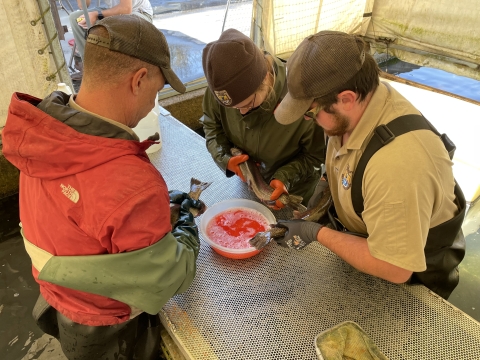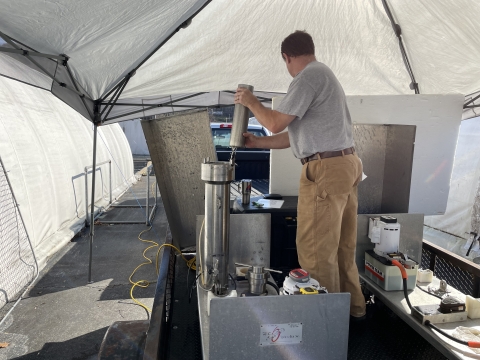Erwin National Fish Hatchery is the nation’s largest non-commercial producer of trout eggs. The majority of eggs produced at Erwin are diploid. Diploid eggs (and the trout that hatch from them) have two sets of chromosomes each. Each year the hatchery will also produce a small quantity of triploid eggs. These eggs have three sets of chromosomes each. There are many benefits to growing and stocking triploid trout. Triploid trout can grow just as large or larger than diploid trout. In fact, the world record for the largest rainbow trout ever caught is held by a triploid! Triploid trout do not spend energy towards reproduction, which can in certain conditions, allow them to grow faster than their diploid counterparts. Another benefit of triploid trout is that these fish are sterile. This allows managers to have greater control in managing trout populations and can prevent hatchery stocked trout from hybridizing with native trout.
Each year staff from the NC Wildlife Resources Commission come up to Erwin NFH to help produce the triploid eggs. Creating triploids is a slow process, compared to diploids. First, the eggs are stripped from the female trout. Then the eggs are fertilized with milt from the male trout. After this there is a set waiting period, which is determined each day based on the water temperature. At the precise time the eggs are exposed to high amounts of pressure. This pressure causes the eggs to retain a third set of chromosomes that would normally be expelled. Erwin NFH and the NC Wildlife Resources Commission work to together to produce approximately 1.5 million triploid rainbow trout eggs and half-a-million triploid brook trout eggs each year!





